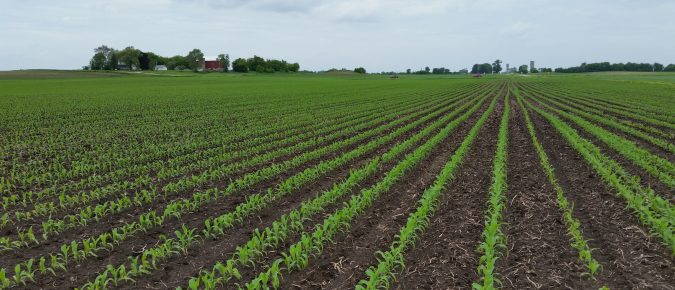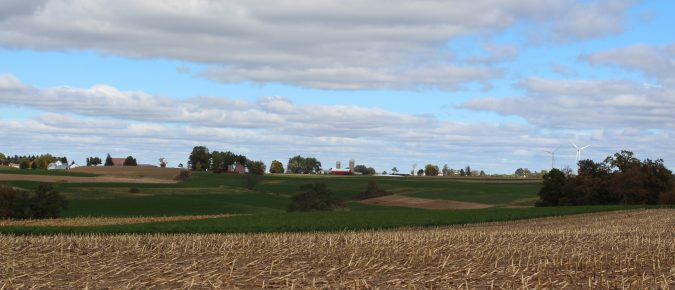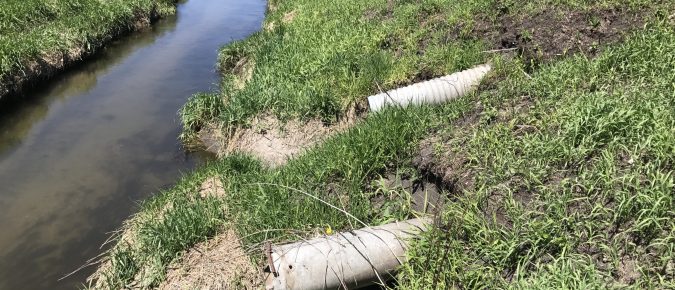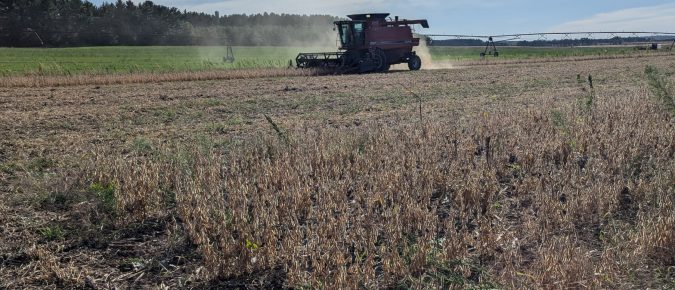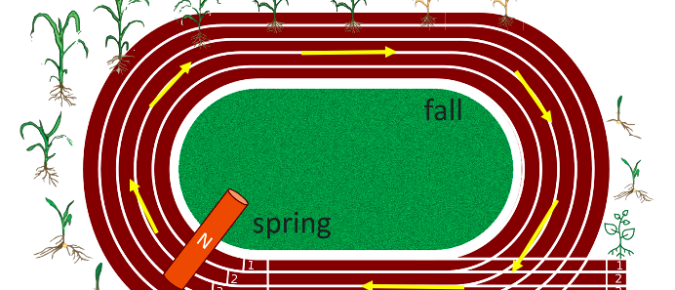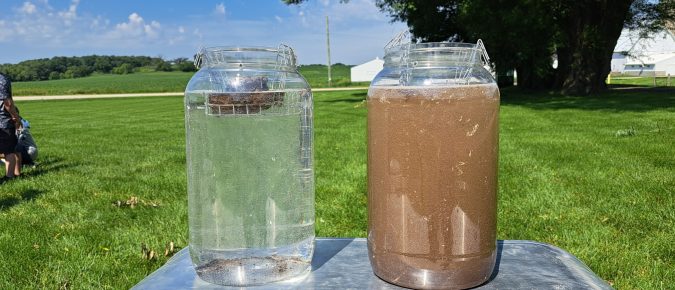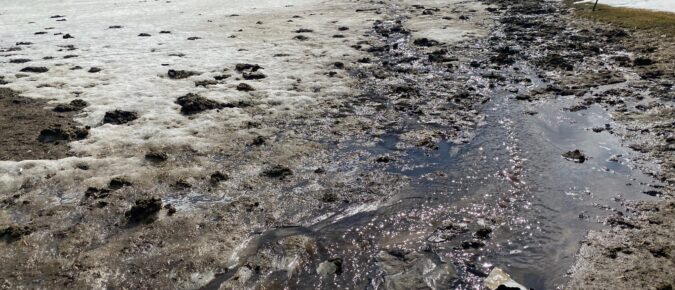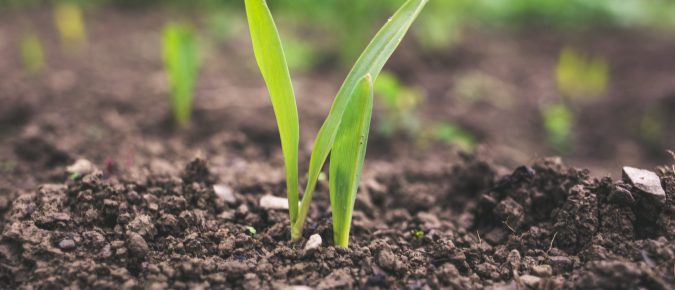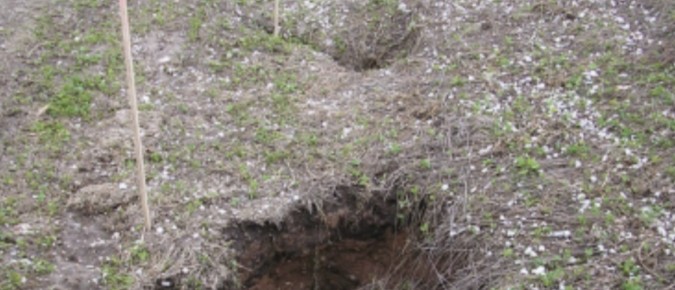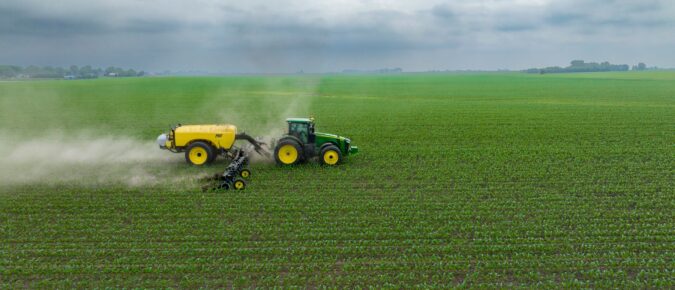Articles
▶ Watch: Nitrate Leaching: Trends in the Midwest to Local Impacts in Wisconsin
Dr. Lindsey Hartfiel, Discovery Farms Research Program Manager, and Kelsey Hyland, Agriculture Water Quality Outreach Specialist, discuss nitrate leaching.
▶ Watch: Updates and Insights on Wisconsin’s Nutrient Reduction Strategy
Wisconsin’s extensive network of partners and stakeholders collaborates to prioritize water quality protection and remediation. This webinar will highlight updates to the Wisconsin Nutrient Loss Reduction Strategy, incorporating a decade of research and experience.
▶ Watch: Tile Drainage Impacts on Water Quality
Agriculture Water Quality Specialist, Laura Paletta and Conservation Profession Training Program Director, Kevin Erb speak to the impacts of tile drainage on water quality and finding old tile lines when maps and records are lost.
Flood Mitigation and Water Quality in Southwest Wisconsin
Introduction Extreme weather is nothing new in Southwest Wisconsin. However, the frequency at which communities and farmers experience this extreme weather in the form of flooding has increased. According to the Wisconsin Initiative on Climate Change Impacts (WICCI), storms that drop 4 inches of rain in 24 hours or less will double by the year […]
Scouting for Soil Erosion in Fall
2024 has provided no shortage of variable weather patterns here in Wisconsin. Each season has contributed to a unique domino effect the likes of which we haven’t seen in some time, if ever. We began by emerging from the single warmest winter on the books for Wisconsin, allowing for field work to take place early and plenty of tillage was concluded before the spring rains arrived.
Manage nitrogen as a budget to reduce groundwater contamination
Nitrogen (N) is at the center of agronomy, climate change, and water quality conversations. Farms are striving to achieve higher yields and quality while reducing emissions and leaching losses by improving their nitrogen use efficiency.
Cover crops for improved surface water quality: Benefits and limitations
This article highlights how cover crops impact phosphorus loss dynamics, including 1) soil and water movement and 2) placement and forms of phosphorus within the soil. Ultimately, situations where cover crops will have the largest impact on total phosphorus loss will be discussed to help farmers and conservation professionals maximize impact.
Spring impacts of climate change on Wisconsin agriculture
This article includes 1) impacts of climate change in spring in Wisconsin, 2) the consequences of climate change with a focus on phosphorus, and 3) practices to increase farm resilience in the face of rapidly changing weather in spring.
▶ Watch: Grazing and Water quality, Lessons learned from edge-of-field research
How do grazing methods affect runoff water quality? Eric Young, USDA-ARS Research Soil Scientist, and Kelsey Hyland discuss lessons learned from edge-of-field grazing research and strategies to maximize water quality benefits in these systems.
▶ Watch: Soil health practices impact on phosphorus pools and availability
Chelsea Zegler and Dr. Jamie Patton continue their conversation from last year on how soil test phosphorus (STP) impacts water quality. Learn how different cover crops and soil health practices change water dynamics, the location and the availability of phosphorus in different soil types.
▶Watch: Wisconsin’s unique karst landscapes and the impacts on water quality
Dr. Maureen Muldoon and Laura Paletta share how Wisconsin’s unique karst landscapes and Silurian bedrock impact the ground beneath our feet and groundwater resources. They provide information on best management practices to utilize in these areas to lessen soil and nutrient loss impacts.
▶Watch: Optimizing nitrogen use and reducing nitrate leaching
How do we optimize the use of commercial nitrogen and reduce nitrate leaching? Guolong Liang, agriculture water quality outreach specialist, and Monica Schauer, research director for NOPP, discuss the importance of nitrogen optimization and the strategies to reduce nitrate leaching. Learn about how agronomic results and water quality impacts connect with lessons from an on-farm trial from the Nitrogen Optimization Pilot Program (NOPP) from 2023.

